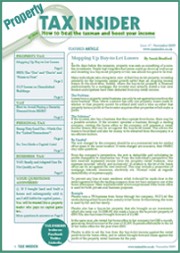Before you go, sign up to our free tax saving email course. Get 7 top property tax saving strategies in your email inbox that will help you save thousands in tax. Unsubscribe any time.
 This is the second of two articles which looks at joint property ownership of rental properties (excluding furnished holiday lets). See Property Tax Insider (March 2011) for the first instalment. This article concentrates on non-spouse (or civil partner) joint ownership. This is the second of two articles which looks at joint property ownership of rental properties (excluding furnished holiday lets). See Property Tax Insider (March 2011) for the first instalment. This article concentrates on non-spouse (or civil partner) joint ownership.
The term ’joint ownership‘ refers to ’beneficial‘ not ’legal‘ joint ownership; tax consequences follow beneficial ownership.
Rates of Income Tax
50/50 Rental Income Split
Thus, for example, if one person owns 80% and the other person owns 20% of the property, any rental income may be split as agreed. This may be 80/20; 70/30; 90/10 or whatever else is agreed.
If each person is liable to income tax at the same marginal rate whatever the agreed split, the same aggregate income tax charge will arise. However if, for example, one person is liable at the 50% marginal rate of income tax and the other person has no taxable income, it may make sense to ensure that the person subject to the lower rate receives a greater proportion of the rental income.
Other than 50/50 Rental Income Split
Making the 50/50 Rental Profit Split Work
However, this would not be the case for non-spouse joint ownership as the automatic 50/50 split does not apply to non-spouses.
Expenses
Capital Gains Tax (CGT)
However, transfers between non-spouses precipitate a CGT charge as the transfer is assumed to be at market value but any SDLT charge is based upon any actual consideration passing (which may or may not be market value).
Joint Tenants or Tenants in Common Ownership
Practical Tip
This is a sample article from the monthly Property Tax Insider magazine. Go here to get your first free issue of Property Tax Insider. |


 Tax Articles
Tax Articles